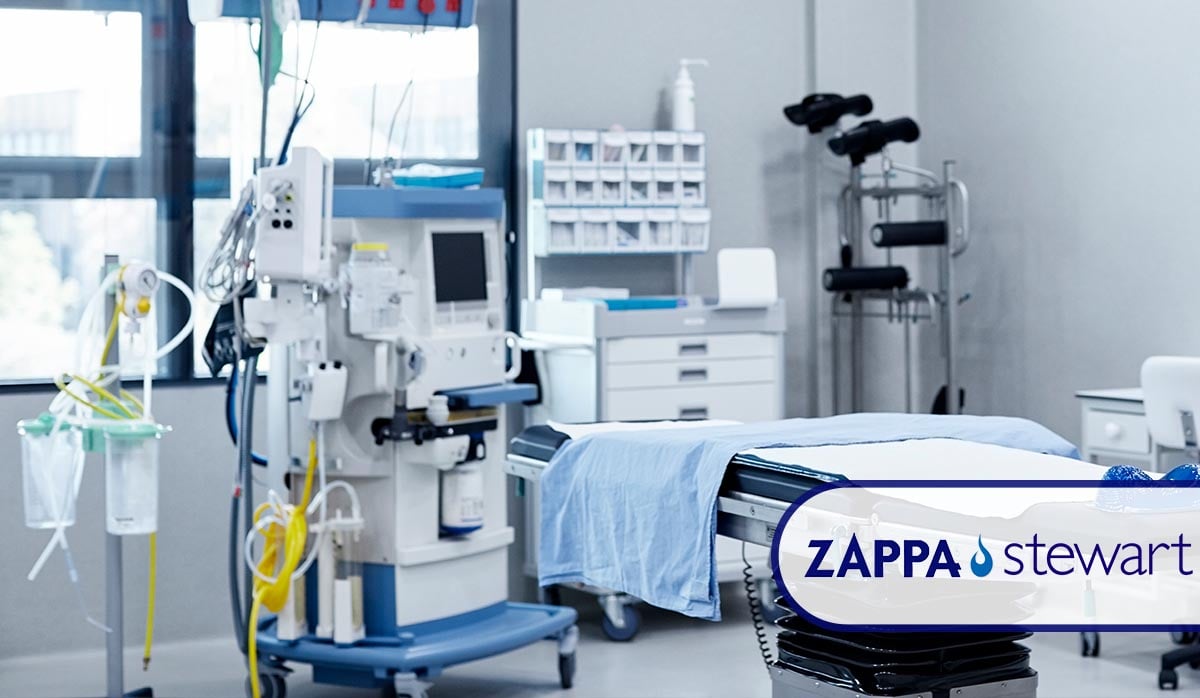 With the recent COVID-19 pandemic caused by the novel SARS-CoV-2 virus, infection control within the healthcare environment is more important than ever before. Management of potentially infectious waste needs to be strictly followed in order to keep our healthcare workers, material handlers, truck drivers and others safe from potentially virulent material. Taking full precautions and maintaining compliance with existing regulations support employees’ health and safety, which in turn benefits hospitals and other service companies that depend on said employees.
With the recent COVID-19 pandemic caused by the novel SARS-CoV-2 virus, infection control within the healthcare environment is more important than ever before. Management of potentially infectious waste needs to be strictly followed in order to keep our healthcare workers, material handlers, truck drivers and others safe from potentially virulent material. Taking full precautions and maintaining compliance with existing regulations support employees’ health and safety, which in turn benefits hospitals and other service companies that depend on said employees.
Before starting a discussion on how Zappa Stewart solidifiers allow compliance, let’s first understand the regulations with which a product/business must comply.
Which agencies regulate waste management?
1) Occupational Safety and Health Administration (OSHA) Regulations contained in 29 CFR 1910.1030 and
2) Department of Transportation (DOT) Regulations for packaging regulated medical waste in 49 CFR 173.197
What happens if my company does not comply with the regulations?
Still today, many companies continue to be assessed multiple violations for failing to comply with the requirements to properly train, correctly classify and transport medical waste.
These violations most often occur when the medical waste is not properly classified and solidified or containerized. The fines can be assessed by OSHA under the “Enforcement Procedures for the Occupational Exposure to Bloodborne Pathogens” or the Department of Transportation regulations.
The fines vary substantially, but research shows they typically range from $1,000 to $7,000 per violation.
Dependent upon whether the violation was willful, then civil penalties can be imposed as well. With the abundance of training now mandated by these regulatory programs, inspectors are generally not receptive to the argument that the employee had no knowledge of how to comply with the requirements stipulated in these OSHA and DOT programs.
What exactly is OSHA 29 CFR 1910.1030?
OSHA creates and enforces safety and health regulations to ensure that employees work in environments that are free from recognized hazards.
29 CFR 1910.1030 – Bloodborne Pathogens*
Universal Precautions is an approach to infection control. According to the concept of Universal Precautions, all human blood and certain human body fluids are treated as if known to be infectious for HIV, HBV, and other bloodborne pathogens. (The purpose of the Bloodborne Pathogens Standard is to limit occupational exposure to blood, bodily fluids, and other potentially infectious materials (OPIM) because any exposure could result in bloodborne pathogen transmission.)
Proper use of solidifiers assists in achieving compliance with Universal Precautions (i.e., exposure risk minimization).
*Note: The complete Bloodborne Pathogens Standards can be obtained at http://www.osha.gov/SLTC/bloodbornepathogens/standards.html
What exactly is DOT 49 CFR 173.197?
The applicable DOT regulations for packaging Regulated Medical Waste (RMW) are contained in 49 CFR 173.197. These regulations have been reformatted and summarized below for easier reading.
(e) Inner packaging authorized for Large Packaging, Carts, and BOPs (bulk outer packaging). Inner packaging must be durably marked or tagged with the name and location (city and state) of the offeror except when the entire contents of the Large Packaging, Cart, or BOP originate at a single location and are delivered to a single location.
(1) Solids. A plastic film bag is authorized as an inner packaging for solid regulated medical waste transported in a Cart, Large Packaging, or BOP. Waste material containing absorbed liquid may be packaged as a solid in a plastic film bag if the canister contains sufficient absorbent material to absorb and retain all liquid during transportation.
How do medical waste solidifiers help achieve compliance?
Medical waste solidifiers provided by Zappa Stewart contain sodium polyacrylate superabsorbent polymer. The solidifiers are specifically formulated for the safe, efficient and fast absorption of medical waste, such as body fluids and saline, that is captured in suction canisters found in all healthcare operating and emergency rooms.
Sodium polyacrylate solidifier crystals are capable of easily solidifying 50-60 times their weight in waste fluids. Either as a single-use drop-in packet or a pourable single-use bottle of crystals, the solidifier can be added to the suction canister before or after it is filled with liquid waste. Within a couple of minutes after the addition of the premeasured amount of solidifier, it completely absorbs (i.e., solidifies) and retains all liquid during transportation, allowing the medical waste canister to meet full compliance with DOT regulations.
Fully solidified medical waste minimizes exposure to potentially infectious fluid as the waste is no longer able to splash, seep or pour from the container, which meets OSHA’s Universal Precautions requirement.
Read our blog, “The Next Step in Safety,” to learn how medical waste can be treated during solidification for even greater healthcare worker safety. Treatment can also allow for conversion from red bag to white bag waste in certain states, resulting in an overall reduction in healthcare facilities’ waste management costs.
For additional information, please contact Zappa Stewart.





